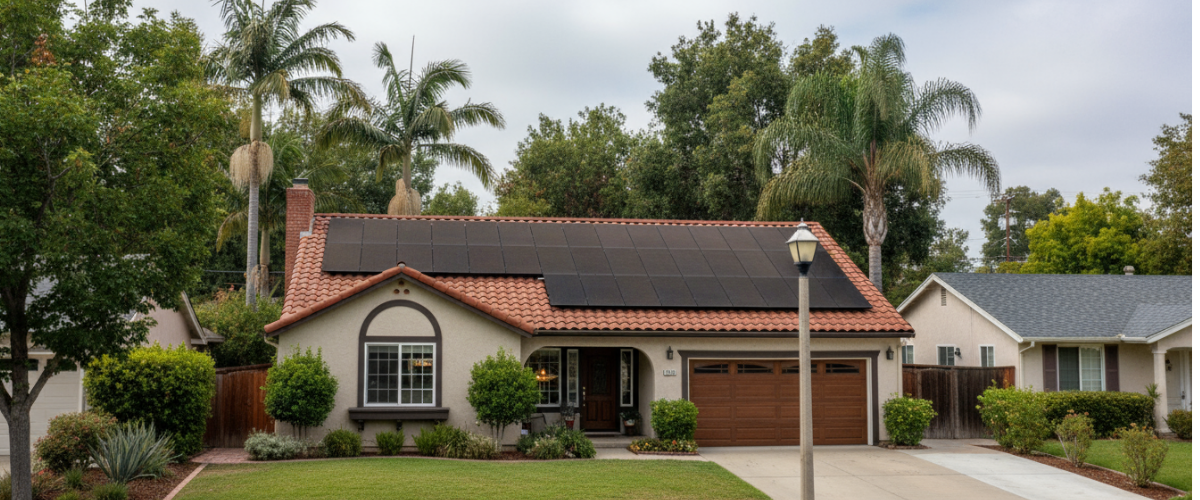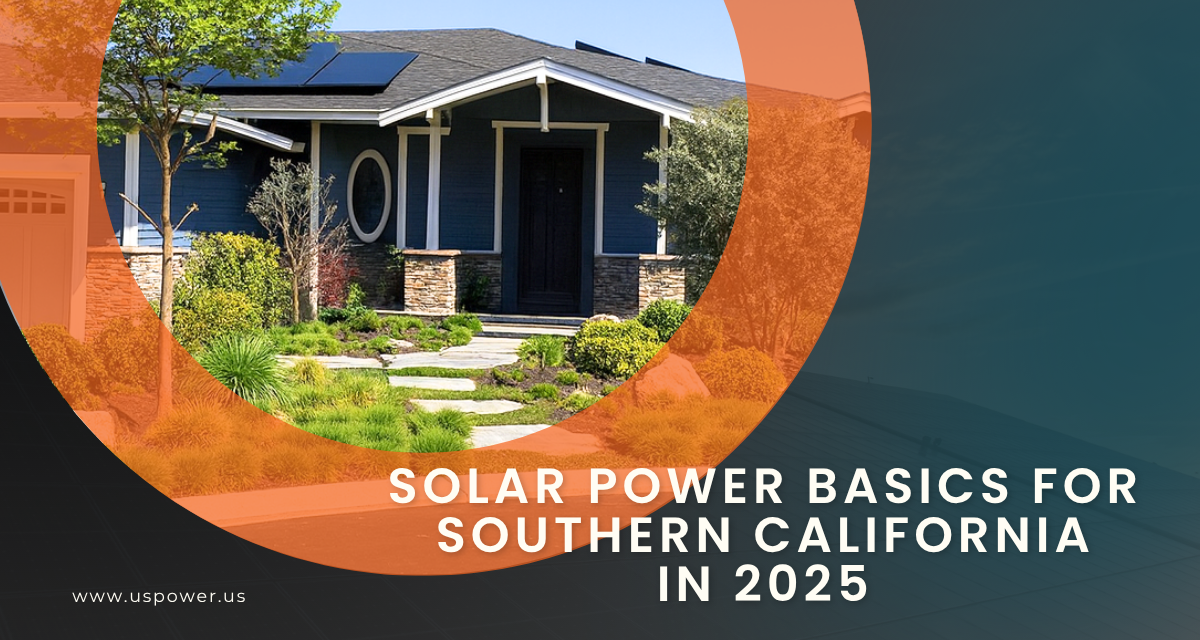Is DIY Solar Worth It in 2025? Legal Rules & Costs Explained

Solar and Roofing Advisor
Learn about California’s 2025 solar laws, permit rules, and the smart way to install your home solar panels before your regret your DIY solar project.

Short answer: Maybe — but for almost every Southern California homeowner it’s not recommended. The rules, safety risks, permit hurdles, utility interconnection requirements, warranty impacts, and possible lost incentives usually make a professional installation the smarter, safer, and more cost-effective choice.
Why People Consider DIY Solar
Homeowners think DIY solar will save money, be a fun project, or let them control every detail. In some very limited cases — for small off-grid projects or micro rooftop add-ons under strict limits — owner-install can work. But the moment a system ties to the house electrical system and the grid, things get complicated fast: building permits, electrical code, utility interconnection, fire-safety rules, and warranty/insurance considerations all apply.
The Legal & Permit Reality in California (What Actually Matters)
California’s licensing and permitting framework means most grid-tied solar jobs will require licensed professionals or careful owner-builder compliance:
- California’s Contractors State License Board (CSLB) recognizes a C-46 (Solar Contractor) classification for solar installation, design, maintenance and repairs — this is the standard trade classification for businesses installing PV systems.
- A homeowner may qualify for the CSLB owner-builder exemption when working on their own, principal residence — but strict conditions apply (you must live in the home, not have used the exemption more than allowed, the work must meet permit rules, etc.). This exemption is narrow; it does not remove building-permit or electrical-inspection obligations.
- New rules raising the small-job (handyman) exemption to $1,000 (and clarifying that projects requiring permits fall outside that exemption) mean that most full rooftop solar systems — which require permits — are not covered by the small-job exception. If your full project costs more than the exemption or requires permits, a licensed contractor and proper permits are required.
Bottom line: If your solar system will connect to the home electrical panel or the grid (which nearly all financially worthwhile systems do), you will face permit and inspection requirements that effectively force licensed trade involvement for design and the high-voltage electrical connections. Attempting to bypass this can create legal, safety, and insurance problems.
Utility Interconnection & Net Metering — How the Grid Treats DIY Systems
Even after the panels are physically installed, they must be safely interconnected and approved by your utility to export or receive credits.
- CPUC Rule 21 governs interconnection of customer generation across California utilities — it sets the technical and approval framework utilities use to safely connect PV and battery systems to the grid. Trying to interconnect without following Rule 21 procedures is not possible and not safe.
- Southern California utilities (e.g., SCE, LADWP, SDG&E) have specific interconnection and net-metering rules; utilities require completed application documents, inspections, and a final permission-to-operate before the system can export to the grid or receive credits. Failing to follow interconnection steps risks denied credits and fines.
Implication for DIYers: Even if you physically mount panels, the utility will require paperwork and an approved electrical hookup performed to code. Most utilities will not finalize interconnection for an installation that isn’t permitted or inspected.
Money Matters: Incentives, Tax Credits, Warranties, and Insurance
- The federal Residential Clean Energy Credit (IRC §25D), which provided a 30% credit on residential solar + battery installations under the Inflation Reduction Act, has a key deadline: recent federal legislation in 2025 terminates claims for expenditures made after December 31, 2025. That means homeowners intending to claim the 30% credit must have eligible projects installed and placed in service by Dec 31, 2025. (Check with your tax advisor / IRS guidance for your specific situation.)
- Manufacturer and installer warranties are often voided or limited if panels, inverters, or batteries are improperly installed. Manufacturers typically require certified installers or pre-approved mounting and electrical standards to honor full product and performance warranties. If DIY work leads to damage, you may lose warranty protection.
- Your homeowner’s insurance and local building department will expect permitted work. Unpermitted wiring or connections can lead to denial of claims or orders to remove the system.
Practical takeaway: Losing a 30% tax credit, a roof-penetration warranty, or insurance coverage can erase or reverse any DIY labor savings.
Safety and Technical Pitfalls
- Solar involves roof work at heights — fall risk and roof damage are real. Professional crews bring fall-protection, scaffolding, and experience preventing leaks.
- PV systems are high-voltage DC; improper wiring can cause fires. Installing inverters, rapid-shutdown devices, and safe DC/AC combiner work requires electrical expertise and code familiarity.
- Battery storage adds specialized rules (fire department access, approved enclosures, AHJ/fire code compliance). Improper battery installs have caused house fires in other states — don’t take that lightly.
When DIY Might Be Appropriate
- Small, off-grid hobby systems with isolated loads and no grid connection (and under local permit thresholds) can be done by an experienced DIYer who understands DC wiring and battery safety.
- A DIYer with formal electrical licensing (a California C-10 electrician or C-46 solar contractor) and experience could legally and safely install a system — but that’s not a typical homeowner scenario.
A Fair Cost Comparison: DIY vs. Pro
Real savings from DIY typically vanish once you factor in:
- permit/inspection fees,
- the time value of money and time spent,
- potential rework if inspections fail,
- warranty loss,
- higher insurance risk, and
- missed tax incentives or utility credits.
Licensed installers (like US Power) consolidate permitting, design, inspection scheduling, interconnection paperwork, and contractor warranties — that saves time and reduces risk far more than the typical homeowner’s labor cost.
A Step-by-step Safe Plan for Homeowners Who Still Want Involvement
- Get a site assessment from a licensed installer (free at many companies). They’ll map shade, panel placement, and realistic system size.
- Ask for a “permit-ready” design and an itemized quote (panels, inverters, racking, labor, permits, interconnection).
- Confirm warranty and performance guarantees — get them in writing.
- If you do any work yourself, limit it to non-electrical tasks the AHJ allows (example: clearing roof obstructions), and get the licensed electrician to do final connections.
- Keep all permits, inspection records, and final permission-to-operate documents — you’ll need them for incentives and resale.
Why Southern California Homeowners Usually Choose a Pro (and Why US Power)
Southern California’s high electric rates, strong sunlight, and utility rules make professionally designed systems the most economical path to maximize savings and avoid headaches. US Power offers:
- Local Southern California teams that know utility rules and interconnection (faster permission-to-operate).
- Factory-direct pricing on QCells panels through an exclusive partnership — letting homeowners access high-efficiency, American-made panels at competitive prices.
- Full permitting, inspection, interconnection handling, and long-term warranties that protect both roof and equipment.
Quick FAQ (for busy homeowners)
- Can I install solar myself and still claim the federal credit? Possibly — but you must meet IRS rules and have the system legally placed in service before deadlines; unpermitted or unsafe installs can disqualify claims. Confirm with IRS guidance and a tax professional
- Do I need a licensed contractor? If the job exceeds exemption thresholds, requires permits, or connects to the grid — yes, you’ll effectively need licensed contractor involvement; the C-46 solar classification is the typical license.
- Will the utility accept my DIY hookup? Utilities require interconnection paperwork, inspections, and code-compliant electrical connections under CPUC Rule 21 — so utilities generally won’t give final permission without proper permits and inspected electrical work.
DIY solar might seem like a great way to save money and take control of your energy, but for most Southern California homeowners, the reality is far more complicated. Between strict permit requirements, safety standards, electrical codes, and utility approvals, the process can quickly turn overwhelming — and one small mistake could cost you your warranty, insurance coverage, or federal tax incentives.
Choosing a licensed local installer ensures every step, from roof inspection to final interconnection, is handled properly and safely. At US Power, homeowners get peace of mind knowing their system meets California’s latest 2025 regulations, qualifies for available incentives, and delivers long-term savings with factory-direct QCells panels made in America.
Thinking about DIY or curious what a pro can do for less than you think?
Schedule a free site assessment with US Power today — get a custom, permit-ready design, clear pricing, and help locking in federal incentives before December 31, 2025 (deadline may apply).
If you want to lower your electric bills without the stress, let US Power take care of everything — permits, inspections, and installation — so you can enjoy a clean, compliant, and efficient solar system that truly pays off for years to come.
Related Articles
Our Related Blogs
2025 solar panel costs analyzed with insights to maximize homeowner savings.
Go solar the easy way. Connect now and claim your 30% federal solar credit.
Electricity rates climbing past $0.30/kWh, SoCal homeowners are are turning to solar.
Our Solar and Roof Brand Partners








We empower communities and businesses to harness clean, renewable solar energy solutions that drive sustainable growth.
Ready to Own Your Power? Call us today!
818-650-8010
Copyright © 2025 US Power - Axia by QCells. All Rights Reserved.
Privacy is important to us, so you have the option of disabling certain types of storage that may not be necessary for the basic functioning of the website. Blocking categories may impact your experience on the website.
Essential
These items are required to enable basic website functionality.
Personalization
These items allow the website to remember choices you make (such as your user name, language, or the region you are in) and provide enhanced, more personal features.
Marketing
These items are used to deliver advertising that is more relevant to you and your interests.
Analytics
These items help the website operator understand how its website performs, how visitors interact with the site, and whether there may be technical issues.
We and our third-party partners use cookies and other technologies to enhance and track your experience on this site, conduct analytics, and personalize marketing to you. By using the site, you agree to our use of these technologies, including recording and monitoring your interactions with the site.
Get an instant solar estimate using satellite!









